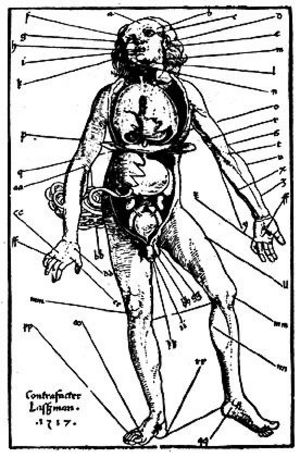Phlebotomy is a term that came to be in the 20th century, as the process of drawing blood for medical testing. Prior to this, it was a widely used therapeutic method known plainly as “bloodletting”. Bloodletting is a practice that has a very rich and diverse history, and has been performed throughout the ages for many different reasons. From religious to medicinal purposes, blood has been drawn in many cultures from as early as the BC times, up to modern day. The Mesopotamians practiced bloodletting for sacrificial and ritualistic purposes along with medical reasons, as did the Egyptians and the South American Aztecs and Mayans. It wasn’t until 5th century ancient Greece that the art of bloodletting became recognized as a serious medical procedure, and spread throughout other scholarly civilizations for them to expand upon.
Ancient Greek physician Hippocrates, who is referred to as “The Father of Medicine” first mentioned bloodletting in his works, proclaiming that a woman’s menses is a means of bleeding out certain toxins that they have more of than men. However, it was his student Galen that was the first among civilized societies to perform bloodletting in practice.
A big turning point occurred when Galen discovered that veins and arteries carried actual blood and not air, as was thought previously. Ancient physicians believed that blood came to be, and did not circulate, stagnating certain parts of the body. Blood, as well as other bodily fluids known as “the four humors” phlegm, black bile and yellow bile had to be in a certain balance, as did their elemental counterparts the classical elements- water, fire, air and earth. Blood was thought to be the dominant humor out of the four and was the most common fluid removed, though drugs were also given to induce vomiting or urination for additional balance. In balancing the body through humor manipulation, it was believed the universe was balanced as well.
They assigned veins and arteries to specific organs in the body. Cutting a vein in the right hand would be appropriate for what was believed to be a liver problem, while the vein in the left would be for the spleen. A fever would yield the most copious amount of blood drawn. Extensive charts were compiled by countless physicians of areas where blood should be drawn for desired effects.
Though this was the age of medicine in it’s chrysalis, the procedures for removing blood were ritualistic and spiritual, much like the earlier tribal practitioners. There were certain procedures for different days of the week, seasons, weather, and in the Christian faith, blood would be drawn on specific saint holidays for whatever illness they dealt with. Medieval monks bled each other often to regulate their general health. Followers of Islamic faith were responsible for carrying on the bloodletting tradition and their Talmudic authors on the topic helped spread the practice all over Europe, and even into India and China.
Though ancient bloodletting was commonly performed with lancets, and fleams, leeches gained in popularity as they come equipped with a natural coagulant that they inject into the skin upon latching on.
This practice carried on into the 16th century where it truly had the largest acknowledgement, particularly in northern European countries, especially in France where bloodletting was practiced frequently for almost every ailment imaginable. Bloodletting was used to treat almost every illness or disease, from diabetes, to gout, to herpes, to epilepsy, to insanity to jaundice and hundreds more. The goal with all of this bloodletting was to cause the patient to faint, which was thought to be when they were finally cured.
The devices for drawing blood became more complex and innovative as well, spring loaded lancets and scarificators with intricately designed slicing mechanisms came to be, for the more superficial surface veins. “Cupping” grew in popularity, specially designed glass cups placed on the skin then heated to create suction in troublesome areas. Leeches made a big comeback, and it was common to see clinics that used only those to heal ailments.
In the 18th century, the barber surgeons came to be, distinguishing physicians from surgeons, the first true division of labor in the medical field. They were big on draining excess blood, “breathing the vein”, and used a special bowl with a half moon slice on a side where the arm can rest, while they were being groomed. It was a very nonchalant, but still important practice- and more common than any other medical procedure. The patient would squeeze on a pole to flex the vein, which is where the barber pole concept arose from, with the red stripe being blood, and the white stripe being the tourniquet. They would use this symbol to advertise their services.
Bloodletting spread to the United States due to Benjamin Rush (a signor on the Declaration of Independence) and postulated that the flow within the arteries was the key to health. He ordered perhaps the most blood drawn throughout history, including first President George Washington, who is believed to have died from excessive bloodletting ordered for his throat infection.
Late 19th century scientists like Louis Pasteur and Robert Koch determined that germs, and not an excess of the four humors were what caused illness, and evidence was collected that showed bloodletting was truly not as effective as it was once believed to be. In older times, the physicians believed that any treatment was better than none at all, and bleeding was once of the easiest methods to treat a patient. Modern times brought about a turning point in the philosophy of medicine as more was being discovered about the body, and bloodletting began to die out, though was still practiced in obscurity in rural communities.
Though certain illness like hemachromatosis & polycythemia, which cause an excessive amount of blood and/or iron still require heavy bloodletting, it is not practiced anymore in present times for therapeutic purposes. The modern day bloodletters are referred to as phlebotomists, and extract venous and arterial blood from patients for the purposes of running tests which will determine the treatment.
Phlebotomy or bloodletting, however you refer to it, is one of the oldest forms of medical practice lasting thousands of years and continues to be an important job within the medical field in the 21st century.
References:
Red Gold . Blood Basics . Early Practices . Bloodletting | PBS:
http://www.pbs.org/wnet/redgold/basics/bloodletting.html
Bleeding Phlebotomy Section – Phisick Medical Antiques:
http://www.phisick.com/zphleb.htm
Antique Bloodletting and Leeching Instruments:
http://www.medicalantiques.com/medical/Scarifications_and_Bleeder_Medical_Antiques.htm
Bloodletting – Wikipedia, the free encyclopedia:
http://en.wikipedia.org/wiki/Bloodletting
Bloodletting: Facts, Discussion Forum, and Encyclopedia Article:
http://www.absoluteastronomy.com/topics/Bloodletting
Collect Medical Antiques — Bloodletting and the Four Humors:
http://www.collectmedicalantiques.com/bloodletting2.html




